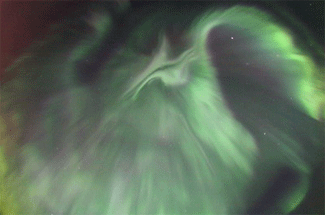We can do it better, in archaeomagnetism

The Earth's magnetic field (EMF) is dynamic, it varies slightly every day and there are important variations at larger scales: annual, secular, etc. Roughly the field is essentially dipolar, i.e. it has two distinct opposite poles in diametrically opposite point. However, to accurately describe the field the non-dipolar contributions must be taken into account. These contributions also vary across time.
Archaeomagnetism is a scientific area that results from the application of magnetic remanence measurements to archaeological remains. These measurements are used to characterize the EMF during the past and sometimes allow to date archaeological vestiges. The information obtainable from archaeomagnetism is discontinuous both spatially and temporally. Archaeomagnetic data are eventually put together in form of catalogues to construct temporal curves that describe the variation of the parameters that define the magnetic field (declination, inclination and intensity). These curves are named ‘secular variation curves, SVC' and are used as a dating tools.
The SVCs are built for a given point on the Earth surface that usually corresponds to a big city or to the geometrical centre of a country. They are valid only within 1000 km around the defined centre. The restricted validity is due to the non-dipolar contributors to the field. If the field was purely dipolar the curves would be of global application since a dipolar field could be fully described on the Earth surface knowing its parameters in a single point.
The validity limit of the SVCs is arbitrary, it is assumed that within the area of application the field is locally dipolar and the geomagnetic data is relocated accordingly. To date, only few rigorous analyses of the error due to the relocation of archaeomagnetic data have been done. Usually, it was assumed that this error was simply lower than the experimental error. However, with the improvement of the techniques and methods to retrieve archaeomagnetic data the experimental errors have diminished significantly. The error analysis has been done systematically using the IGRF and GUMF model series, which describe accurately the field for the last 100 and 400 years respectively.
The performed analysis reveals that the maximum and mean relocation errors of archaeomagnetic data increase lineally with the relocation distance, they reach maximum values of 1.2º and 600 nT per every 100 km relocated using the models of the current field. These high errors are located around the 'South-Atlantic Anomaly'; a zone with a proportion of non-dipolar contributors anomalously high (Fig 1). In other areas the error is much lower and reaches lower maximum values using all the other models (Fig. 2). Moreover, there are reasons to think that in past times (within the last 7000 years) possibly has neither reached higher values. Thus, the mentioned values can be taken as the top errors attributable to data relocation and agree with the fact that during the last 7000 years the EMF has never been so non-dipolar as it is now.
The results permit to delimit the magnitude of the errors due to geomagnetic relocation practice. This practice will progressively disappear due to the introduction of better dating tools: flexible geomagnetic models that can be built directly centered on the point where we have remains to be dated.
References
Casas, Ll.; Incoronato, A. "Distribution analysis of errors due to relocation of geomagnetic data using the Conversion via Pole' (CVP) method: implications on archaeomagnetic data". GEOPHYSICAL JOURNAL INTERNATIONAL, (2007) 169, 448?454

